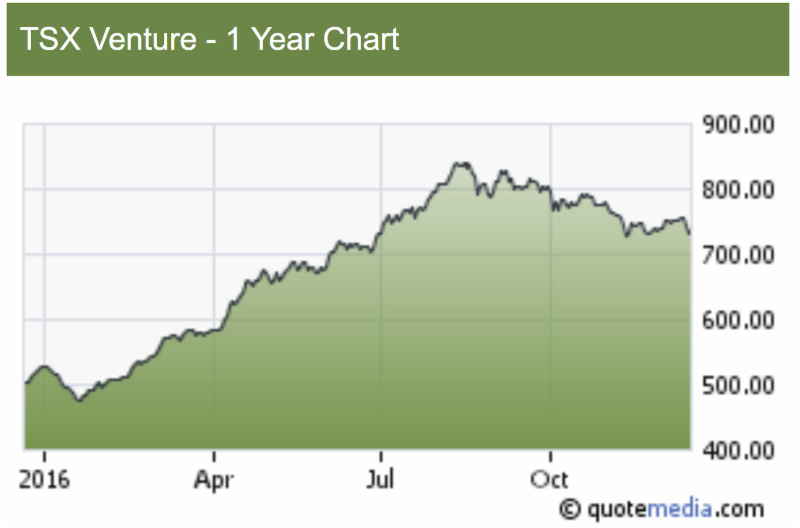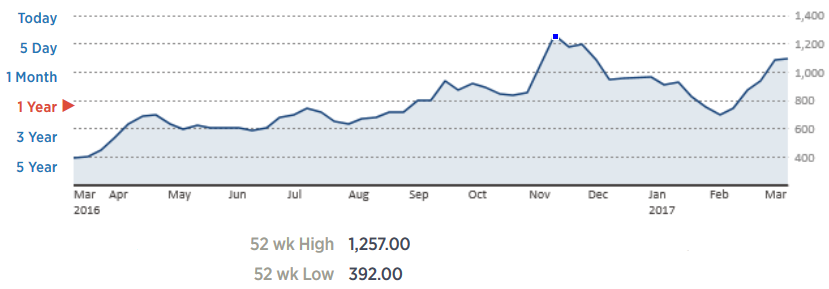Pinnacle Digest
Education: Mining Stocks

Mining Stocks Are Not for Everyone
If ever there was an industry which the term ‘buyer beware’ was applicable – the junior mining space would likely be near the top of the list. It’s a speculator’s game which carries a tremendous amount of risk.
In the mineral exploration business, 1 out of every 1,000 prospective mines eventually reaches production. What happens to indivdual stocks along the way, through cycles of boom and bust, is dominated by speculators, drill programs, commodity prices, and management’s decision making — complete variables.
In the small and micro-cap space, it is our view that management remains the most valuable asset a publicly traded junior mining company has. When investing in junior mining stocks, you are, in part, making a bet on the company’s human capital.
Top 3 Factors that Influence Mining Stocks:
- Sentiment towards the overall sector and the specific commodity
- Management
- Quality of project (high-grade drill results, proven or probable reserves, location, minimal political issues, positive feasibility study, etc.)
Notice the order of the above factors. If the sector/commodity is not in favor, the best management team in the world will not be able to overcome that. When commodities lose their appeal to the broader marketplace, related junior mining stocks waver because they bleed money while in the exploration and development phases. They produce $0 in revenue. Thus, questions arise around how long they can survive during bear markets given the fact they rely on financings (often highly dilutive) to stay afloat. Furthermore, if management is not experienced from both a capital markets and geological perspective, mistakes will lead to missed opportunities.
Without top shelf management, a junior mining company’s true value will not be reached. On the contrary, with the top two factors (strong management, positive sentiment) working in its favor, a junior mining stock has the potential to garner a huge valuation increase in a relatively short period of time. And buyout potential exists when all three components listed above are present. We chronicled this feat in The Making of a Junior Gold Buyout: the Kaminak Story.
Timing the Mining Sector…
Timing when sentiment toward mining stocks will turn bullish is no easy task. We’ve been wrong about when commodity markets will turn too many times to count. Anyone who claims they have the secret formula to timing mining cycles likely has some great fishing stories to tell as well…
However, there are a few basic metrics you can use that help gauge sentiment towards the broader commodity market. And they also help in making a decision whether or not it may be a favorable environment to speculate on senior and junior mining stocks.
Baltic Dry Index | Mining Stocks
In the past, the Baltic Dry Index (BDI) has been an indicator for the mining sector and the broader economy. The BDI is a barometer of real demand for commodities around the globe because it tracks the price of shipping raw materials, including metals, grains, and fossil fuels across various trade routes on three different-sized merchant ships – Capesize, Supramax and Panamax.
In respect to the BDI’s correlation to mining stocks and the broader markets, our March 20, 2016 Weekly Volume titled, What’s Behind this TSX Venture Bull?, stated:
"It accurately forecast the past three major market crashes, including 1987, 2000 and 2008. In 1986, the index hit its first all-time low; in 1999 it hit a 12-year low, and then in 2008 it fell from above 11,000 to roughly 780. After rebounding to nearly 2,500 at the beginning of 2014, the BDI hit a new all-time low of just 290 this February."
When the BDI touches new lows, major commodity indices typically follow suit. Therefore, by monitoring the Baltic Dry Index, investors can obtain a quick, surface-level shot at present global demand for commodities.
Take the 2016 bull market on the TSX Venture for example. The Baltic Dry Index was hitting all-time lows in late-January and February of 2016; and, at the same time, pessimism was peaking on the Venture. On February 8th, 2016, the BDI crashed down to a low of 290. By December 7th, 2016 — just ten months later — the index had rebounded to 1,186.
The TSX Venture hit a low of roughly 466 on January 20th, 2016. Led by mining stocks, on August 11th, 2016 it rebounded to about 848.

Finding Comparables: Key to Mining Stock Research
Successful mining stock speculators do the little things well — which includes comparing a specific project or junior mining stock to some of its peers.
Read Pinnacle Digest’s report: The Importance of Finding Comparables for Junior Mining Stocks.
Below are a handful of factors to consider when searching for relevant junior mining stock comparisons:
- Must operate in the same country (preferably the same state or province as mining laws change from region to region).
- Must have similar (doesn’t have to be exact) strengths/track records in the management team.
- Must be exploring or developing an asset for the same commodity (this should be obvious).
- Must have similar grade drill results (includes depth); and similar sized resource estimates.
- Must have close to the same amount of cash in the bank.
- Must have similar capital structures (doesn’t have to be exact). You should know who the major shareholders are, and what prices they have been positioned in at. Same goes for warrant and option pricing.
-
Similar insider trading records (a great resource for Canadian stocks is Canadianinsider.com). Investors never like seeing large share dispositions by insiders.
https://www.canadianinsider.com/
We travel to mines and exploration projects all over the world to enhance our client coverage. Watch our gold mine trip to Nicaragua in December of 2019 to see the kind of content we create for our clients in the mining sector:
Insider Ownership | A Must for Junior Mining Stocks
Insider buying and insider ownership are two important elements to understand when speculating on junior mining stocks. When we meet with the management of a new company or prospective client, one of the first things we ask is:
How much of the company does management own?
If you are going to put your hard-earned money into a company, management better have some skin in the game.
The goal is to find CEOs (and management) who are highly motivated to create value for both shareholders and themselves by increasing their company’s market cap and share price.
Know the Price Per Ounce
If you are looking at gold mining stocks, and a company has at least a Measured or Indicated Resource Estimate (click here for definitions of mineral resource classifications as the confidence level varies with each category), it’s not difficult to calculate (back of the napkin math) what the ounces in the ground may be worth in a potential acquisition scenario. However, you need to know the general value the market is giving ounces ‘in the ground’ in real time by looking at similar comparables.
Our ultimate guide to investing in gold stocks is a must-read resource to learn from data over the last several years and our tips and insights into reading potential investment opportunities in future.
The value of an ounce in the ground is a constantly moving number that varies dramatically across regions. Furthermore, it can swing wildly over the years depending on the overall sentiment toward gold. We’ve seen ounces in the ground valued at just shy of $2 in bearish times, and over $100 in bull markets (resource categories varied).
Kaminak Gold’s Coffee Deposit, the most prolific buyout of 2016, had probable gold mineral reserves of 2.2 million ounces (46.4Mt at 1.45g/t), and total inferred gold mineral resources of 2.2 million ounces (52.4Mt at 1.31g/t).
The buyout, proposed by Goldcorp, was for $520 million. When we divide that sum by 4.2 million ounces, we’re left with roughly $123 per ounce in the ground. In contrast, many junior gold stocks received a value of between $5 and $10 per ounce in the ground during the bear market of 2012 to late-2015.



